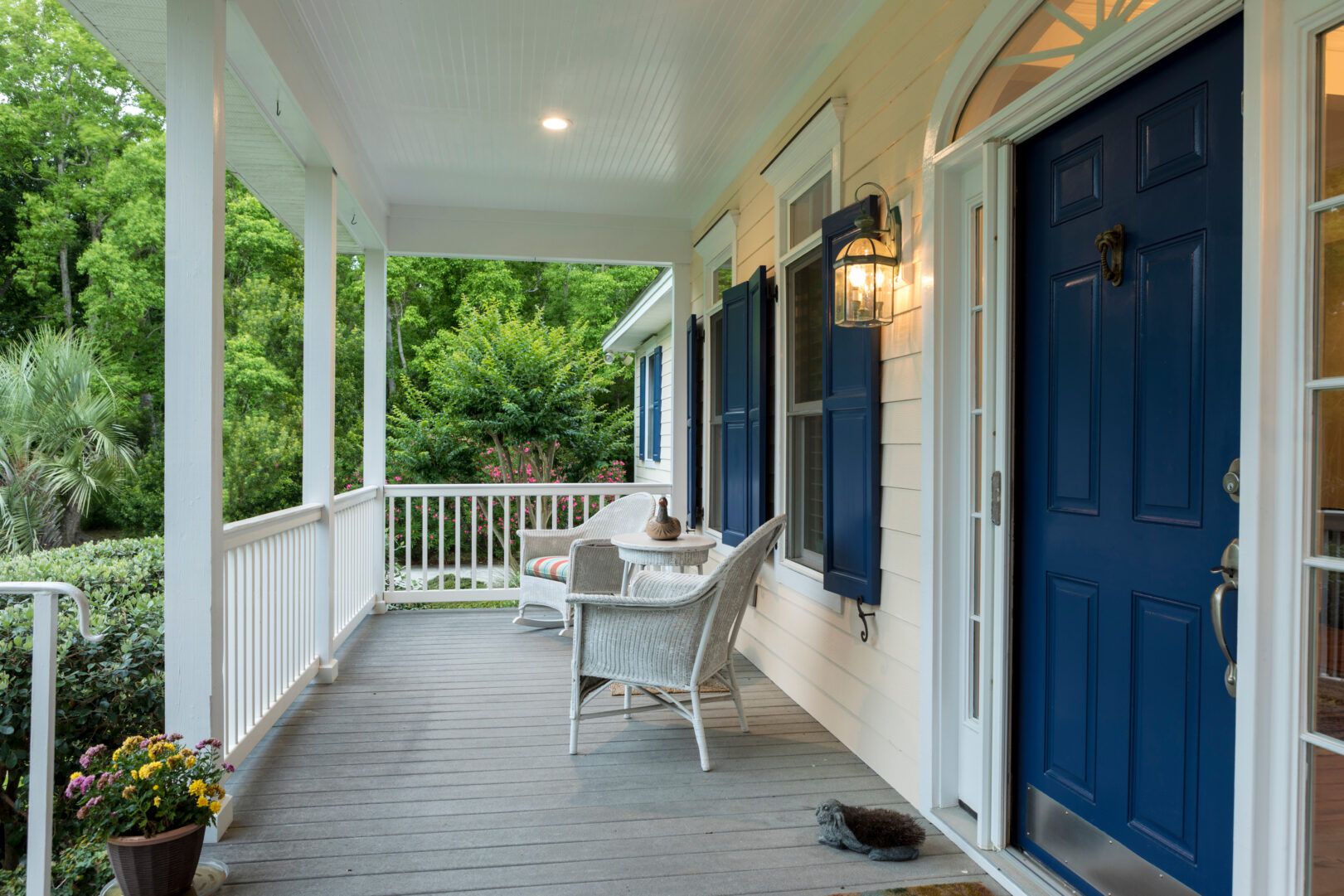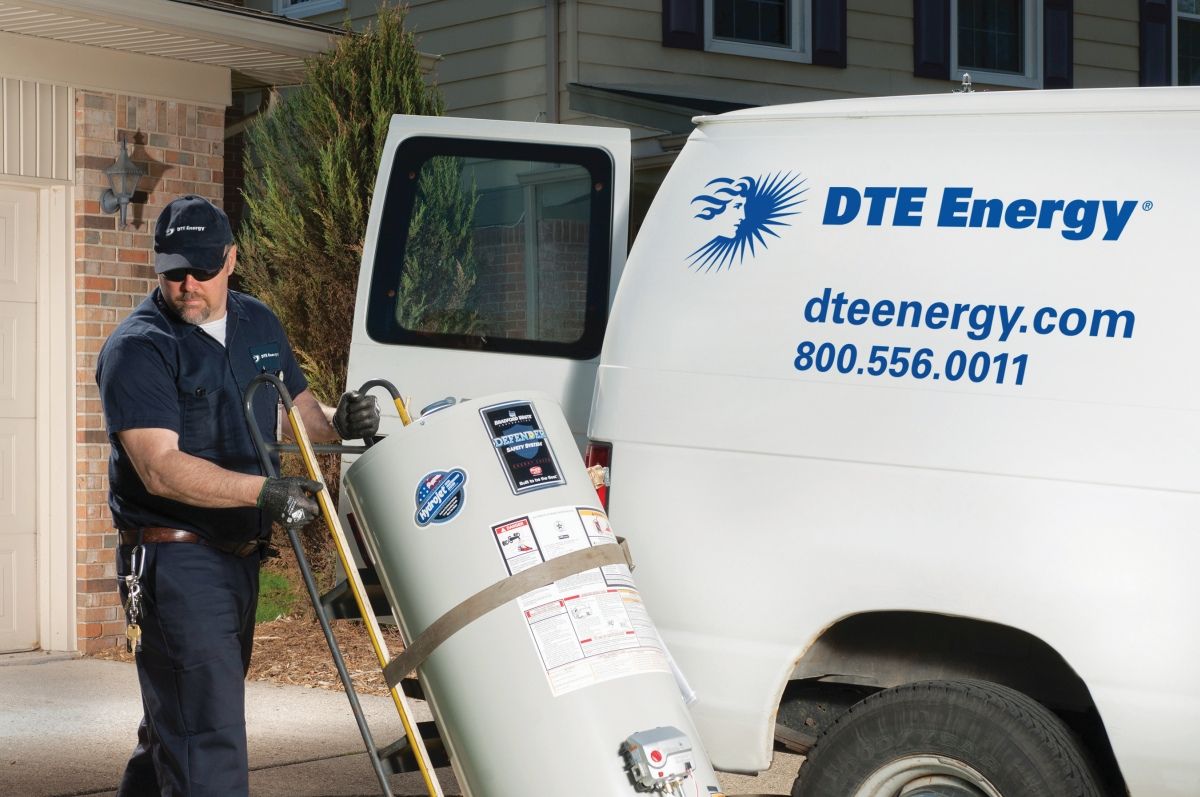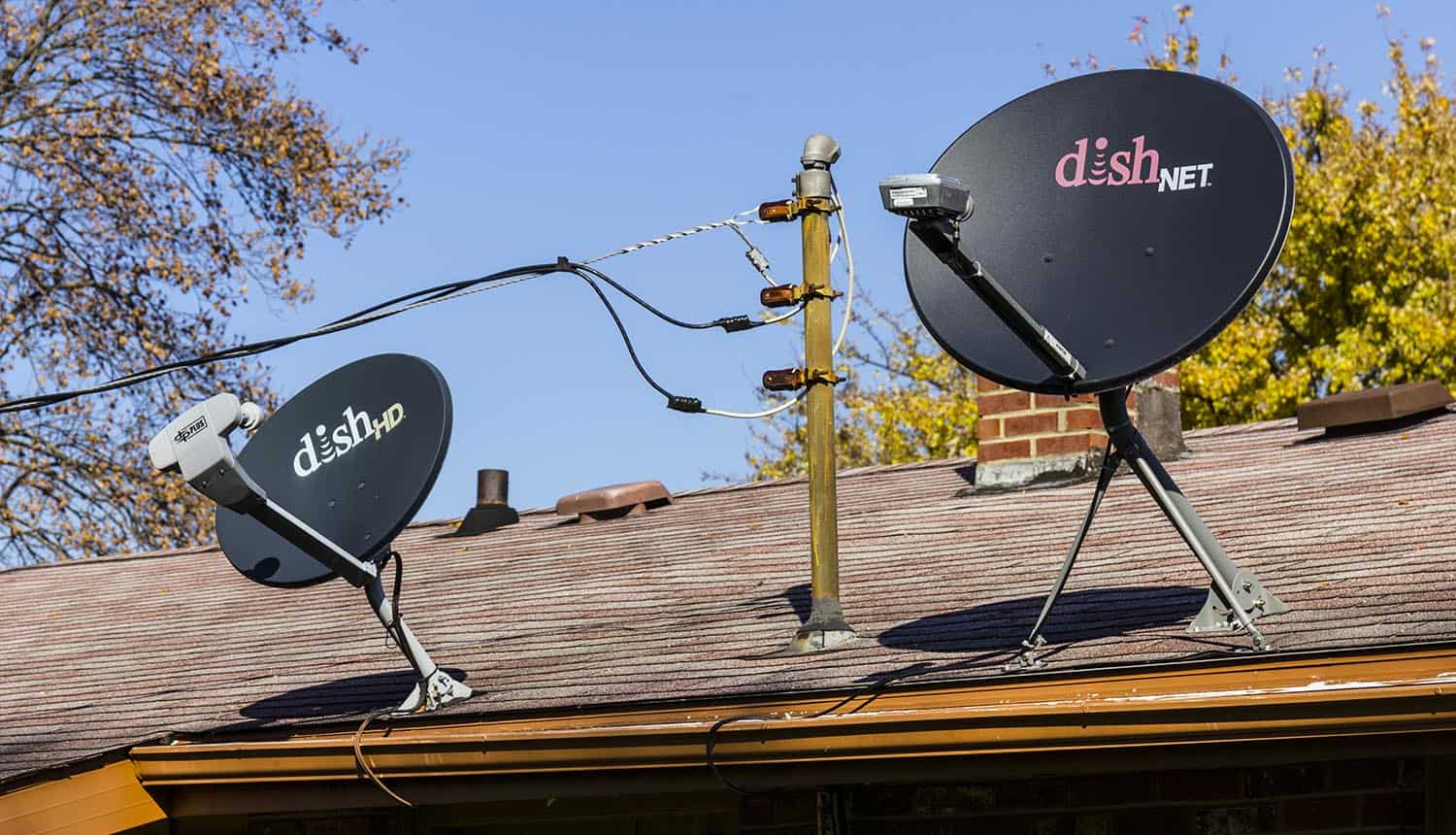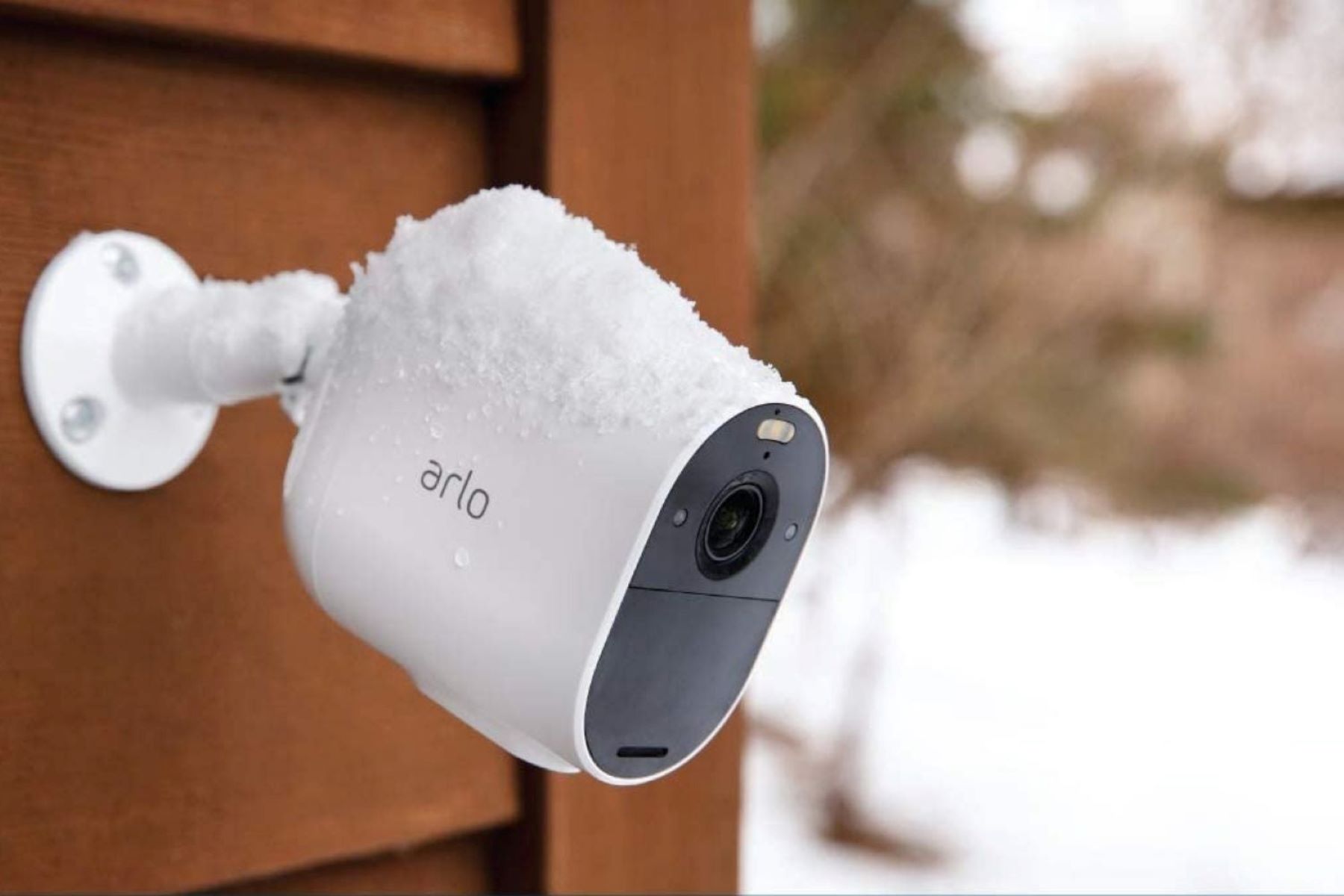Home>Home Security and Surveillance>Which Is Rated The Best Home Protection Plan


Home Security and Surveillance
Which Is Rated The Best Home Protection Plan
Modified: March 6, 2024
Looking for the best home protection plan? Explore top-rated options for home security and surveillance to keep your property safe and secure.
(Many of the links in this article redirect to a specific reviewed product. Your purchase of these products through affiliate links helps to generate commission for Storables.com, at no extra cost. Learn more)
Introduction
Welcome to the world of home security and surveillance! In today’s uncertain times, it is essential to prioritize the safety and protection of our homes. Fortunately, there are various home security and surveillance options available to help safeguard our properties and loved ones.
A home protection plan is an excellent investment for homeowners who want peace of mind and added security. These plans offer comprehensive coverage, cost-effective solutions, and a range of benefits that go beyond traditional security systems. With a wide range of providers and options available in the market, it’s crucial to understand the features, pricing, and customer reviews to make an informed decision.
In this article, we will walk you through the key aspects to consider when choosing a home protection plan. We will discuss the coverage options, cost and pricing, customer reviews and ratings, selection criteria, contract terms, and conditions, as well as the features, claim process, and additional benefits offered by different providers. By the end of this article, you will have a clear understanding of what to look for when selecting the best home protection plan for your needs.
Whether you own a house, condominium, or apartment, protecting your home and belongings is of utmost importance. A home protection plan acts as a comprehensive shield against burglaries, fires, natural disasters, and other unexpected incidents.
With advancements in technology, home security and surveillance systems have evolved significantly. From basic alarm systems to advanced smart home integration, these plans offer a range of features that can be tailored to meet your specific requirements. By choosing the right home protection plan, you can not only deter potential threats but also be instantly notified of any suspicious activities in and around your property.
Additionally, home protection plans typically include monitoring services, allowing professionals to keep a close eye on your home 24/7. This constant monitoring ensures immediate response in case of emergency situations, providing you with the peace of mind that your home and loved ones are safe, even when you’re not there.
No matter the size or location of your home, there’s a home protection plan suitable for you. Whether you’re looking for a basic package with essential security features or a comprehensive plan that includes home automation and surveillance capabilities, the market offers a plethora of options to choose from. Based on your specific needs and budget, you can find a plan that offers the right level of protection and convenience.
Now that you have an overview of what a home protection plan offers, let’s delve deeper into the key factors you should consider when selecting the best plan for your home.
Key Takeaways:
- Choose a home protection plan that fits your needs and budget by comparing coverage, cost, customer reviews, and provider reputation. Prioritize peace of mind and comprehensive protection for your home and loved ones.
- Look for a home protection plan with features like 24/7 monitoring, mobile access, and additional benefits such as emergency response services and home maintenance assistance. Make an informed decision to safeguard your home effectively.
Read more: What Is A Home Protection Plan
Coverage Options
When choosing a home protection plan, it’s important to understand the coverage options available. Different providers offer different levels of protection, so it’s crucial to evaluate your needs and select a plan that offers comprehensive coverage for your home.
Here are some common coverage options that you may come across:
- Break-In and Burglary: This coverage option protects your home against break-ins and burglaries. It typically includes features such as alarms, sensors, and surveillance cameras to detect and deter intruders.
- Fire Protection: Fire can cause devastating damage to your home, so it’s essential to have coverage for fire protection. This may include smoke detectors, fire alarms, and automatic sprinkler systems that can quickly detect and suppress fires.
- Water and Flood Damage: Water damage caused by leaks, burst pipes, or flooding can be costly to repair. Home protection plans may offer coverage for water and flood damage, which can help cover the costs of water extraction, repairs, and restoration.
- Appliance and System Breakdowns: Appliances and home systems such as HVAC, electrical, and plumbing can break down unexpectedly. Coverage for appliance and system breakdowns can assist in the repair or replacement costs of these essential components.
- Natural Disasters: Some home protection plans may offer coverage for natural disasters like hurricanes, tornadoes, earthquakes, or severe storms. This coverage can help cover the costs of repairs and renovations in the aftermath of such events.
- Personal Property Protection: In addition to protecting the physical structure of your home, some plans also provide coverage for personal property. This can include reimbursement for damaged or stolen items such as electronics, jewelry, furniture, and more.
It’s important to carefully review the coverage options offered by different home protection plan providers. Consider your location, the potential risks you may face, and the value of your property and belongings. This will help you determine which coverage options are most important for your specific needs.
Keep in mind that coverage options may vary from provider to provider, so take the time to compare and contrast different plans to find the one that offers the most comprehensive protection for your home.
Next, let’s discuss the cost and pricing factors you should consider when selecting a home protection plan.
Cost and Pricing
When it comes to choosing a home protection plan, cost and pricing play a significant role in making your decision. It’s essential to understand the pricing structures offered by different providers and evaluate them based on your budget and the value you expect to receive.
Here are some key factors to consider when assessing the cost and pricing of home protection plans:
- Monthly/Annual Fees: Most home protection plans have a monthly or annual fee that you’ll be required to pay. This fee covers the basic services and features included in the plan.
- Installation Costs: Depending on the plan and provider, there may be additional installation costs associated with setting up the security system and surveillance equipment. These costs can vary, so it’s important to inquire about them upfront.
- Equipment Costs: Some home protection plans may require you to purchase or lease specific equipment, such as sensors, cameras, or control panels. Be sure to factor in these equipment costs when evaluating the overall pricing of the plan.
- Deductibles and Copayments: Similar to insurance policies, home protection plans may have deductibles or copayments that you’ll need to pay when filing a claim. It’s important to understand these costs and factor them into your budget.
- Contract Length: Many home protection plans require you to sign a contract for a specific duration, such as one year or two years. Consider the length of the contract and whether it aligns with your long-term plans for your home.
- Discounts and Promotions: Some providers offer discounts or promotional offers, especially for new customers or bundled services. Keep an eye out for any available discounts that may help reduce the overall cost of the home protection plan.
While cost is an important consideration, it’s equally crucial to assess the value you’ll receive from the home protection plan. Look beyond the price tag and carefully review the features, coverage options, and additional benefits offered by each plan.
Remember that cheaper doesn’t always mean better, and sacrificing quality and coverage for a lower price may leave you exposed to potential risks. It’s important to strike a balance between affordability and the level of protection you require for your home.
Next, let’s take a look at the customer reviews and ratings for home protection plans to gain insights into the experiences of others who have used these services.
Customer Reviews and Ratings
When considering a home protection plan, it’s crucial to take into account the experiences and feedback of other customers. Customer reviews and ratings provide valuable insights into the quality of service, reliability, and customer satisfaction associated with different home protection plan providers.
Here are some key points to keep in mind when evaluating customer reviews and ratings:
- Online Platforms: Start by checking reputable online platforms that specialize in customer reviews. Websites like Consumer Reports, Trustpilot, and the Better Business Bureau can provide a wealth of information on the experiences of other customers.
- Overall Customer Satisfaction: Look for patterns in the reviews to gauge the overall customer satisfaction with a particular provider. Pay attention to factors such as the responsiveness of the customer support team, the efficiency of the claim process, and the quality of the security and surveillance systems.
- Specific Issues or Concerns: Look for any recurring issues or concerns mentioned by multiple customers. This could be related to poor customer service, delays in claim processing, or technical glitches with the equipment. Keep in mind that no company is perfect, but if there are consistent complaints in a specific area, it may be a red flag.
- Positive Testimonials: Pay attention to positive testimonials that highlight exceptional customer experiences. Look for reviews that mention exemplary customer support, prompt resolution of issues, or effective security measures in preventing break-ins or accidents.
- Word of Mouth: Reach out to friends, family members, or neighbors who have a home protection plan and ask them about their experiences. Personal recommendations can provide valuable insights and help you make an informed decision.
Remember to take customer reviews and ratings with a grain of salt. While they can offer valuable information, they may not represent the experiences of every customer. Use these reviews as a guide to identify potential pros and cons and factors that are most important to you.
By considering the experiences of others, you can gain a better understanding of the strengths and weaknesses of different home protection plan providers. This will assist you in narrowing down your options and selecting a reputable and reliable provider for your home.
Next, we will discuss the selection criteria you should consider when choosing a home protection plan provider.
Provider Selection Criteria
Choosing the right home protection plan provider is a crucial step in ensuring the safety and security of your home. To make an informed decision, it’s important to consider the following selection criteria:
- Reputation and Experience: Look for providers with a strong reputation and extensive experience in the home security and surveillance industry. A company with a proven track record is more likely to deliver reliable services and customer satisfaction.
- Licensing and Certification: Ensure that the provider is properly licensed and certified to offer home protection services in your area. This ensures that they meet the necessary legal and industry standards.
- Range of Services: Evaluate the range of services offered by the provider. Do they offer comprehensive coverage options? Are they flexible in customizing a plan to suit your specific needs? Look for providers that offer a wide range of services to ensure all aspects of your home security are covered.
- Technology and Equipment: Consider the technology and equipment used by the provider. Are they up-to-date with the latest advancements in home security and surveillance? Look for providers that offer state-of-the-art technology and reliable equipment to enhance the effectiveness of your home protection plan.
- Customer Support: Assess the level of customer support provided by the provider. Do they offer 24/7 assistance? Is their customer support team knowledgeable and responsive? Prompt and efficient customer support is essential in addressing any concerns or issues that may arise during your home protection plan’s term.
- Transparency and Contracts: Review the terms and conditions of the provider’s contracts. Are they transparent about their fees, coverage limitations, and claim processes? Avoid providers with complex or hidden clauses that may hinder your ability to fully utilize the benefits of the plan.
- Value for Money: Consider the overall value you’ll receive from the home protection plan. Compare the features, coverage options, and pricing of different providers to ensure you’re getting the best deal for your money.
Don’t rush into selecting a home protection plan provider. Take the time to research and compare different companies based on the selection criteria above. It’s important to find a provider that aligns with your specific needs and offers the best combination of quality, reliability, and affordability.
Next, let’s delve into the contract terms and conditions that you should carefully review before finalizing your selection.
Read more: How Does Sears Home Protection Rate
Contract Terms and Conditions
Before finalizing your choice of a home protection plan, it’s essential to thoroughly review the contract terms and conditions. The contract outlines the rights and responsibilities of both you as the homeowner and the home protection plan provider. Understanding and agreeing to these terms is crucial to ensure a smooth and satisfactory experience.
Here are some key elements to consider when reviewing the contract terms and conditions:
- Contract Duration: Determine the length of the contract and whether it aligns with your long-term plans for your home. Some providers offer contract options ranging from one year to several years. Consider your future circumstances and choose a contract duration that suits your needs.
- Cancellation Policy: Understand the provider’s cancellation policy. Are there any penalties or fees for canceling the contract before its completion? Make sure you are comfortable with the terms and conditions regarding cancellation in case you need to terminate the contract early.
- Renewal Process: Familiarize yourself with the renewal process. Will the contract automatically renew at the end of the initial contract term? If so, determine whether there are any changes to the terms and conditions upon renewal.
- Fee Structure: Take note of the fee structure outlined in the contract. Understand the breakdown of monthly or annual fees and any additional charges, such as installation fees or equipment costs. Pay attention to any potential price increases over time.
- Coverage Limitations: Carefully read through the coverage limitations stated in the contract. Pay attention to any exclusions or specific conditions that may affect the coverage for certain incidents or property types. Ensure that the contract adequately covers your specific needs and concerns.
- Claim Process: Review the claim process outlined in the contract. Understand the steps you need to take in the event of an incident and the required documentation. Determine the timeline for submitting claims and receiving reimbursements or repairs.
It’s crucial to contact the provider if you have any questions or concerns regarding the contract terms and conditions. Seek clarification on any ambiguous clauses or terms that you may not fully understand. It’s better to address any uncertainties upfront to avoid potential issues in the future.
In addition to the contract terms and conditions, it’s important to be aware of any warranties or guarantees offered by the provider. These can provide additional assurance and protection for your investment.
By carefully reviewing and understanding the contract terms and conditions, you can ensure that both you and the home protection plan provider are on the same page regarding the scope of the service, expectations, and responsibilities.
Next, let’s explore the features that you should look for in a home protection plan.
When choosing a home protection plan, look for one with comprehensive coverage, good customer reviews, and a strong reputation for quick and efficient claims processing. It’s also important to compare prices and consider any additional services or benefits offered.
Home Protection Plan Features
A home protection plan comes with a range of features designed to enhance the security and safety of your home. These features vary depending on the provider and the specific plan you choose. When selecting a home protection plan, it’s important to understand the key features that will contribute to the overall effectiveness of the plan.
Here are some essential features to look for in a home protection plan:
- 24/7 Monitoring: The inclusion of 24/7 monitoring services ensures that your home is under constant surveillance. Trained professionals are alerted in case of any security breaches or emergencies, providing speedy responses and assistance.
- Security Equipment: Consider the types of security equipment included in the plan. This can range from basic components such as door/window sensors and motion detectors to more advanced options like security cameras, smart locks, and glass-break sensors.
- Mobile Access and Remote Control: Look for plans that offer mobile access and remote control capabilities. This allows you to monitor and control your home security system from anywhere using your smartphone or other connected devices.
- Home Automation Integration: Consider whether the home protection plan offers integration with home automation systems. This allows you to connect and control various smart devices in your home, such as lights, thermostats, and door locks, for enhanced convenience and security.
- Emergency Response Services: Some plans may offer additional emergency response services, such as medical alert systems or panic buttons. These features provide instant access to help during medical emergencies or other urgent situations.
- Insurance Deductible Reimbursement: Look for plans that provide reimbursement for insurance deductibles in case of covered incidents. This can help alleviate the financial burden associated with filing insurance claims on damages or losses.
- Smartphone Alerts and Notifications: Consider whether the plan offers smartphone alerts and notifications. These can notify you in real-time of any security breaches, system malfunctions, or other important events related to your home security.
- Video Surveillance: If video surveillance is important to you, look for plans that include high-definition cameras with features like live streaming, recording, and cloud storage. This allows you to monitor and review footage of your home at any time.
- Environmental Monitoring: Consider whether the plan includes environmental monitoring features. This can include sensors for detecting smoke, carbon monoxide, or water leaks, providing early warnings to prevent potential disasters.
Each home protection plan may have different combinations of these features, so it’s important to prioritize the ones that align with your specific needs and preferences. Think about your lifestyle, home layout, and any unique circumstances that require additional security measures.
Ultimately, the goal of a home protection plan is to provide comprehensive protection and peace of mind for you and your family. By considering the features offered by different providers, you can select a plan that offers the right combination of functionality, convenience, and safety.
Next, let’s explore the claim process and response time provided by home protection plans.
Claim Process and Response Time
In the unfortunate event that you need to file a claim with your home protection plan, it’s essential to understand the claim process and the provider’s response time. A smooth and efficient claim process ensures that you receive the necessary assistance and compensation in a timely manner.
Here are some key considerations regarding the claim process and response time:
- Notification Procedure: Familiarize yourself with the provider’s procedure for reporting a claim. Understand the preferred method of notification and the required information/documentation to initiate the claim process.
- Claim Submission: Determine the timeline for submitting a claim after an incident occurs. Promptly provide all the necessary documentation and evidence to support your claim, such as police reports, photos, or receipts for damaged or stolen items.
- Claim Review Process: Understand how the provider will review and evaluate your claim. This may involve inspections, expert assessments, or discussions with relevant parties. Clarify how long the review process typically takes to manage your expectations.
- Response Time: Inquire about the provider’s average response time for emergency situations. This is particularly important for incidents that require immediate attention, such as burglaries, fires, or medical emergencies. A quick response time can help mitigate further damage or harm.
- Claim Approval and Compensation: Clarify how the provider determines claim approval and the extent of compensation. Understand any deductibles, copayments, or limits on reimbursement. Be aware of any depreciation assessments for damaged or stolen items and how the settlement will be processed.
- Communication Channels: Ensure that the provider offers clear channels of communication throughout the claim process. It’s important to have a designated point of contact who can provide updates, answer your questions, and address any concerns you may have.
- Claim Dispute Resolution: Inquire about the procedures in case of claim disputes or disagreements. Understand the steps involved in resolving disputes and the options available to you if you are unsatisfied with the outcome.
Remember to carefully read the terms and conditions of the contract regarding claims. Pay attention to any coverage limitations, exclusions, or specific requirements that may affect the claim processing.
By having a clear understanding of the claim process and response time, you can better prepare yourself for potential incidents and ensure a smooth and efficient experience when dealing with your home protection plan provider.
Next, let’s explore the additional benefits and services that some home protection plans may offer.
Additional Benefits and Services
While the primary objective of a home protection plan is to provide security and protection for your home, some plans may offer additional benefits and services. These extra features can enhance your overall experience and provide added value to your investment. When comparing different home protection plans, consider the following additional benefits and services:
- Emergency Response Services: Some home protection plans may offer additional emergency response services, such as medical alert systems or panic buttons. These services can provide quick access to help during medical emergencies or other urgent situations.
- Home Maintenance Assistance: Certain plans may include home maintenance assistance, offering access to a network of professionals for repairs and maintenance needs. This can be particularly helpful for addressing minor issues around your home before they turn into major problems.
- Identity Theft Protection: Look for plans that offer identity theft protection as an additional benefit. This can include credit monitoring, fraud detection, and assistance in resolving issues related to identity theft.
- Home Insurance Discounts: Some providers offer partnerships with insurance companies, which can result in discounts on your home insurance premiums. Check if the home protection plan you’re considering offers these benefits.
- Energy Efficiency Solutions: Certain home protection plans may provide energy efficiency solutions, such as smart thermostats or energy usage monitoring. These features can help you save on energy costs and reduce your environmental footprint.
- Home Warranty Coverage: In addition to home protection, some plans also include home warranty coverage. This can provide protection for major appliances, electrical systems, plumbing, and other home systems beyond the scope of basic security features.
- Discounted Equipment Upgrades: Check for plans that offer discounted equipment upgrades or incentives for adding extra security features to your home, such as additional cameras or sensors.
- Professional Installation: Consider whether the home protection plan includes professional installation of the security and surveillance equipment. Professional installation ensures optimal performance and reduces the risk of setup errors.
- Mobile App Features: Look for plans that offer robust and user-friendly mobile apps. These apps can allow you to control and monitor your home security system, receive alerts and notifications, and access other relevant information from your smartphone or tablet.
When evaluating additional benefits and services, consider your specific needs and preferences. Think about which features would add the most value to your home security and align with your lifestyle.
Keep in mind that not all home protection plans offer the same additional benefits and services, so it’s important to compare the offerings of different providers to find the one that meets your requirements.
Next, let’s discuss how you can compare different home protection plan providers to make an informed decision.
Read more: What Is An ERA Home Protection Plan
Provider Comparison
When selecting a home protection plan, it’s important to compare different providers to find the one that best suits your needs and preferences. Conducting a thorough comparison allows you to evaluate key factors and make an informed decision. Here are some aspects to consider when comparing home protection plan providers:
- Coverage Options: Review the coverage options offered by each provider. Consider their range of protection against break-ins, fire, water damage, and other incidents that concern you. Ensure that the provider offers comprehensive coverage for your specific requirements.
- Cost and Pricing: Compare the cost and pricing structures of different providers. Assess the monthly or annual fees, installation costs, equipment expenses, deductibles, and any potential discounts or promotions. Keep in mind the value you’ll receive in relation to the price you pay.
- Customer Reviews and Ratings: Read customer reviews and ratings for each provider. Consider the overall satisfaction levels, positive and negative feedback, and any recurring issues mentioned by customers. This can provide valuable insights into the provider’s reliability and quality of service.
- Reputation and Experience: Evaluate the reputation and experience of each provider. Look for established companies with a strong track record in the industry. Consider factors such as their years of operation, licensing, and certifications.
- Technology and Equipment: Assess the technology and equipment used by each provider. Consider whether they offer state-of-the-art security systems, surveillance cameras, smart home integration, and mobile access features. Choose a provider that stays up-to-date with the latest advancements in home security technology.
- Customer Support: Evaluate the level of customer support provided by each provider. Check if they offer 24/7 customer assistance, responsive communication channels, and knowledgeable support staff. Prompt and reliable customer support is essential in addressing any concerns or issues that may arise.
- Contract Terms and Conditions: Compare the contract terms and conditions of different providers. Pay attention to contract lengths, cancellation policies, renewal procedures, and any potential hidden clauses. Ensure that the provider’s terms align with your expectations and requirements.
- Additional Benefits and Services: Consider the additional benefits and services offered by each provider. Evaluate whether they provide valuable features like emergency response services, home maintenance assistance, or identity theft protection. Choose a provider that offers added value beyond basic security coverage.
- Personal Recommendations: Seek personal recommendations from friends, family, or neighbors who have experience with home protection plans. Their insights and firsthand experiences can help you make a more informed decision.
By comparing providers based on these factors, you can narrow down your options and select the one that aligns best with your needs, priorities, and budget. It’s important to choose a reliable and reputable provider that offers quality services and meets your expectations for the protection of your home and loved ones.
Finally, let’s summarize the main points and conclude the importance of selecting the best home protection plan for your needs.
Conclusion
Choosing the best home protection plan is a critical decision when it comes to safeguarding your home and ensuring the safety of your loved ones. By considering the coverage options, cost and pricing, customer reviews and ratings, provider selection criteria, contract terms and conditions, home protection plan features, claim process, and additional benefits and services, you can make an informed choice that suits your specific needs and preferences.
When comparing different home protection plan providers, consider the level of coverage they offer for break-ins, fire, water damage, and other potential incidents. Evaluate the cost and pricing structures, ensuring that you find a plan that offers comprehensive protection within your budget. Take into account the experiences and feedback of other customers through customer reviews and ratings, and prioritize providers with a strong reputation and customer satisfaction.
Additionally, consider the reputation and experience of the providers, the technology and equipment they offer, and the level of customer support provided. Carefully review the contract terms and conditions, understanding the contract duration, cancellation policies, and any potential fees or limitations. Look for additional benefits and services, such as emergency response services, identity theft protection, or home maintenance assistance, that enhance the overall value of the home protection plan.
By comparing and evaluating these factors, you can select a home protection plan that meets your specific needs, preferences, and budget. A well-chosen plan can provide you with a sense of security, peace of mind, and the knowledge that your home and loved ones are well-protected.
Remember, no one home protection plan fits all, so spend time researching and considering your options before making a decision. By investing in a reliable and comprehensive home protection plan, you take an important step towards protecting what matters most to you.
Frequently Asked Questions about Which Is Rated The Best Home Protection Plan
Was this page helpful?
At Storables.com, we guarantee accurate and reliable information. Our content, validated by Expert Board Contributors, is crafted following stringent Editorial Policies. We're committed to providing you with well-researched, expert-backed insights for all your informational needs.













